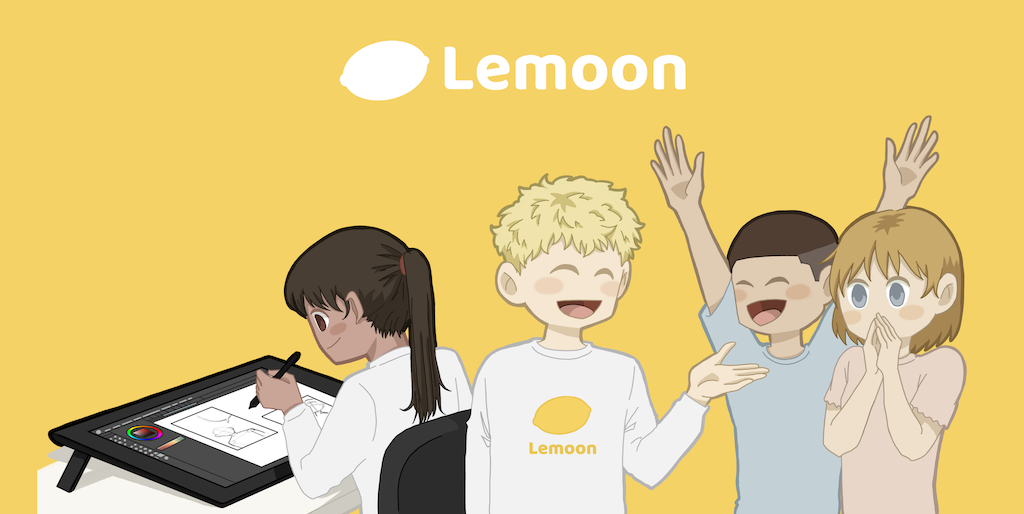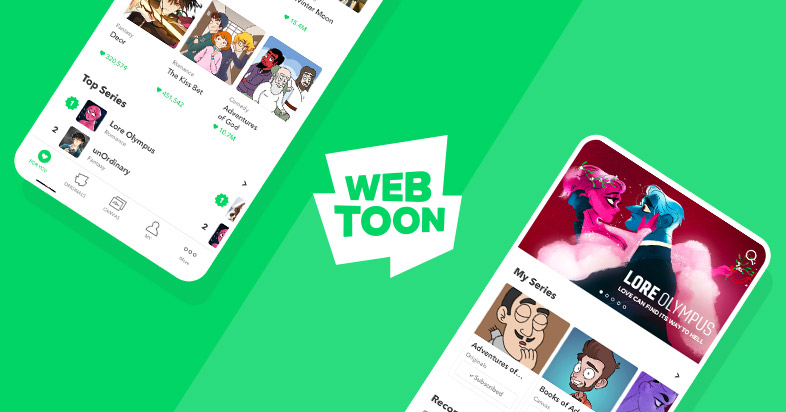
Webtoon is a popular style of comics that originated in South Korea and has gained immense popularity in recent years.
The format of webtoons is unique in that they are read vertically and in color, making them easily accessible on phones and other mobile devices. As a result, webtoons have attracted a large number of readers and creators alike.
If you're an artist or a webtoon creator looking to get started, then this article is for you! In this guide, we'll take you through the steps to create a webtoon, from developing your story and characters to publishing your work online 😉
1 - The story
The story is the foundation of your webtoon, and it's important to create a well-structured plot that will engage and captivate your readers. Before you start drawing, take the time to develop your story and define the 3 main axes of your plot.
The beginning
First, there's the beginning, which sets the context of your story and captures the reader's attention. This is where you introduce your characters and establish the setting of your story. The beginning should be exciting and interesting enough to make your readers want to continue reading.
The middle
Next, there's the middle, which is where the story develops, and the characters face challenges and obstacles. This is the section of your webtoon where your readers will begin to get invested in your characters and the plot. As the story progresses, questions will begin to arise, and your readers will be left wondering what happens next.
The end
Finally, there's the end, where everything comes together, and questions are answered. The ending should be satisfying and conclusive, leaving your readers feeling satisfied and fulfilled.
To create a well-structured plot, it's important to plan out your story before you start drawing. Take the time to create an outline and develop your characters and their motivations. By doing so, you'll be able to create a compelling story that will keep your readers coming back for more.
2 - The characters
Creating characters is a fun and important part of creating a webtoon. The characters you create will help drive the story forward and keep readers engaged.
To start, you'll need to define who your characters are, including their personalities and traits. This will allow your readers to appreciate or identify with your characters, and also help you to keep their behaviors and motivations consistent throughout the story. You should also consider their appearance, as this will be what readers visualize as they read your webtoon.
Here are some things to consider when creating your characters:
- Personality and characteristics: Are they introverted or extroverted? Energetic or lazy? Strong or weak? The possibilities are endless, and it's up to you to define your characters' personalities 😁🤷♀️
- Appearance: This is an important part of creating characters, and you should take the time to define their physical features. Think about their hair texture, skin color, body type, and other defining characteristics.
- The role: Once your characters are created, you need to define their importance in the story. Who are the main characters and heroes? Which characters will be liked or disliked by your readers?


It's a good idea to create a character design that incorporates all of these elements, so you can have a clear visual representation of each character. You can either draw the characters yourself or collaborate with an artist.
Remember, characters are the heart and soul of your webtoon, so take the time to create compelling and relatable characters that your readers will love.
3 - The Storyboard
Once you have a rough idea of your story and your characters, it's time to start creating a storyboard. A storyboard is a visual outline of your webtoon, and it's an essential step in the creation process. It will help you to visualize the first episodes of your webtoon, and it will also define many elements that you will need to keep consistent throughout your creation.
Here are some things to consider when creating your storyboard:
- Format: Decide on the format you will use to draw your webtoon. A standard size is 940px wide by 10000px in length.
- Number of panels per episode: The number of panels you include in each episode will depend on your webtoon's genre, the length of the episode, and the content you want to include. It can range from 10 to 80 panels per episode.
- Number of episodes: Determine the number of episodes you will need to tell your story. This will help you stay organized and ensure that you don't run out of content.




During the storyboard phase, take your time to experiment with different brushes, inks, and colors. This will help you to define the visual style of your webtoon and save time in the long run.
Remember, creating a webtoon takes time, and it's important to be patient during the storyboard phase. This is your opportunity to refine your story, experiment with different styles, and set the foundation for your webtoon's success.
4 - The Final Rendering
Once you have your story, characters, and storyboard in place, it's time to start the final rendering of your webtoon.
The final rendering phase can be broken down into 4 stages.
Line Art
The first stage of the final rendering is the line art. This is where you'll create the basic outlines and shapes of your characters and backgrounds. It's important to take your time during this stage and ensure that your lines are smooth and clean.

Coloring
Once you have the line art complete, it's time to add color to your webtoon. This is where you'll bring your characters and backgrounds to life with color. It's important to experiment with different color palettes and shading techniques to find the right style for your webtoon.

Background
The background is an important part of your webtoon and can help to set the scene and create an atmosphere. During this stage, you'll need to create the environment that your characters will inhabit. This can be anything from a street corner to a fantasy world.

Lettering
The final stage of the rendering process is lettering. This is where you'll add speech bubbles, sound effects, and any text to your webtoon. It's important to choose a font that is easy to read and fits the style of your webtoon.

During each of these stages, take the time to save your brushes, tools, and color palettes 😅
This will save you time in the future and ensure that your webtoon has a consistent style throughout.
Now that you have your final rendering complete, you're ready to move on to the next step - publishing your webtoon!
5 - Publishing
Your 3 first episodes are finished and ready to be published, you have corrected your spelling mistakes 4 to 15 times 🥲, and you even asked some friends to read it to get their opinion. Now, everything is ready for you to share your webtoon with the world!
Before you can publish your webtoon, you need to decide on the platform where you want to publish it. There are several websites that allow you to publish your webtoon for free and easily, including:



Each platform has its own requirements for presentation images, such as thumbnails, covers, and banners, so be sure to research the platform's guidelines before you publish. You'll also need to create a title and description for your webtoon that will catch readers' attention.
Once you have everything ready, it's time to hit the publish button!
Conclusion
As you have seen, creating a webtoon is a process that requires a lot of time and effort. Each creator has their own way of organizing and approaching the creation process. I hope this article has given you valuable insights and tips to help you get started on your own webtoon project.
Remember, don't rush yourself during the creation process. Take your time to structure your story, define your characters, and register the elements that will allow you to save time. Move slowly but surely, and enjoy the process of creating something that reflects your unique vision and style.
It's important to distinguish between the creation and publishing phases of your webtoon. This article has focused on the creation process, while publishing is a more complex and strategic aspect that deserves its own article 😉
In conclusion, the publishing phase is where your webtoon is shared with the public, and it's an opportunity for you to make yourself known as a creator. So, take the time to prepare for it 😊



